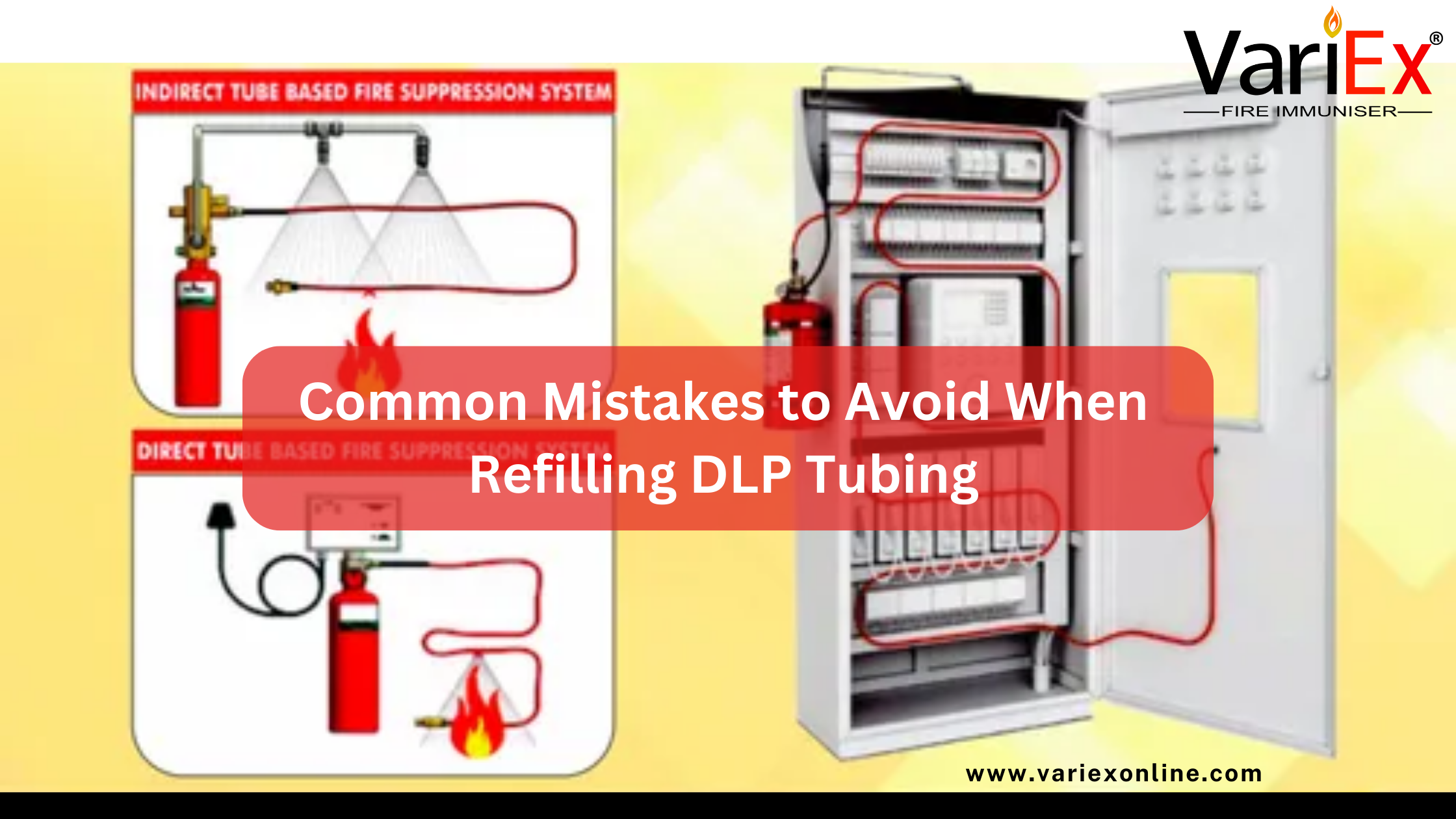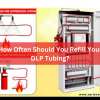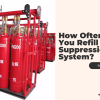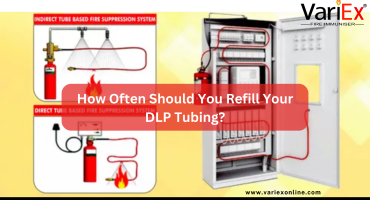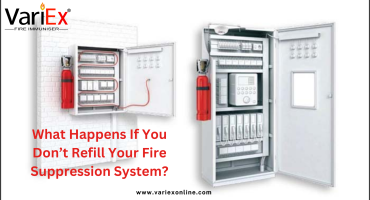![]()
Fire Immuniser
+91-7829629111
Email: info@variex.in
Varistor Technologies Pvt. Ltd.
Block-1, First Floor, Ardente Office One, Hoodi Circle, ITPL Main Road, Bengaluru, Karnataka 560048, IN
Common Mistakes to Avoid When Refilling DLP Tubing
Common Mistakes to Avoid When Refilling DLP Tubing
DLP (Direct Low Pressure) tubing plays a crucial role in fire suppression systems, automatically detecting and extinguishing fires before they spread. However, improper refilling of DLP tubing can compromise its effectiveness, putting people and property at risk.
In this article, we’ll explore the most common mistakes made during DLP tubing refilling and provide expert tips on how to avoid them to maintain an optimal fire safety system.
Using the Wrong Type of Gas or Fluid
One of the biggest mistakes when refilling DLP tubing is using an incorrect extinguishing agent. Different fire suppression systems require specific gases or fluids to function correctly.
How to Avoid This Mistake:
- Always refer to the manufacturer's guidelines for the correct extinguishing agent.
- Use only certified and approved gases or liquids compatible with your system.
Overfilling or Underfilling the Tubing
Maintaining the correct pressure inside the tubing is essential for proper fire detection and suppression. Overfilling can cause leaks or system malfunctions, while underfilling may lead to delayed fire detection.
How to Avoid This Mistake:
- Use a pressure gauge to ensure the right fill level.
- Follow the recommended pressure settings as per system specifications.
Not Checking for Leaks After Refilling
Even a small leak in the DLP tubing can render the entire fire suppression system ineffective. Many people skip the post-refill leak test, assuming the tubing is intact.
How to Avoid This Mistake:
- Perform a leak test using soapy water or a specialized leak detection solution.
- Inspect all connections and seals before finalizing the refilling process.
Ignoring Tubing Wear and Tear
Over time, DLP tubing may degrade due to environmental exposure or wear and tear. Refilling without checking for cracks, kinks, or brittleness can lead to system failure.
How to Avoid This Mistake:
- Conduct a visual inspection before refilling.
- Replace any damaged sections of tubing before filling.
Using Non-Calibrated Equipment
Many people use generic filling equipment without checking if it’s calibrated for DLP tubing specifications, which can lead to inaccurate pressure levels and inconsistent system performance.
How to Avoid This Mistake:
- Always use manufacturer-recommended or calibrated filling equipment.
- Regularly check and maintain your pressure gauges and valves.
Failing to Flush the Tubing Before Refilling
Residual contaminants, old extinguishing agents, or moisture inside the tubing can affect performance. Refilling without cleaning the tubing can lead to blockages or reduced efficiency.
How to Avoid This Mistake:
- Flush the tubing using an appropriate cleaning solution before refilling.
- Ensure the tubing is completely dry before introducing a new extinguishing agent.
Skipping Regular Maintenance Checks
DLP tubing systems require routine maintenance to function properly. Many neglect scheduled inspections, which increases the risk of undetected issues.
How to Avoid This Mistake:
- Follow the recommended maintenance schedule from the manufacturer.
- Conduct periodic pressure and integrity checks to ensure system readiness.
Not Training Personnel on Proper Refilling Procedures
Many fire suppression system failures occur due to human error. If the staff handling the refilling process is not trained, mistakes are more likely to happen.
How to Avoid This Mistake:
- Ensure all personnel responsible for refilling undergo proper training.
- Conduct regular refresher courses to keep the team updated on best practices.
Ignoring Regulatory Compliance Requirements
Fire safety regulations require businesses and industries to follow specific refilling protocols. Failing to comply can result in fines, legal issues, or insurance claims being denied.
How to Avoid This Mistake:
- Stay updated with local fire safety regulations.
- Work with certified professionals to ensure compliance.
Not Documenting the Refilling Process
Proper documentation helps in tracking refill schedules, identifying system issues, and ensuring regulatory compliance. Many businesses skip this step, leading to gaps in maintenance records.
How to Avoid This Mistake:
- Maintain detailed logs of each refilling session.
- Record pressure levels, leak tests, and technician details for future reference.
Comparison Table: Common Mistakes & Solutions
| Mistake | Consequence | Solution |
|---|---|---|
| Wrong extinguishing agent | System failure | Use manufacturer-approved agents |
| Overfilling/Underfilling | Malfunction or delayed fire detection | Use pressure gauge, follow specifications |
| Not checking for leaks | Ineffective fire suppression | Conduct leak test after refilling |
| Ignoring tubing wear | System failure over time | Inspect tubing before refilling |
| Using non-calibrated equipment | Inconsistent pressure | Use calibrated equipment |
| Skipping flushing before refilling | Blockages, inefficiency | Flush tubing properly |
| Not training personnel | Increased human error | Conduct training sessions |
| Ignoring compliance rules | Legal/insurance issues | Follow local fire safety regulations |
| No documentation | Maintenance gaps | Maintain refill logs |
Conclusion
Properly refilling DLP tubing is essential for maintaining an effective fire suppression system. By avoiding these common mistakes—such as using incorrect extinguishing agents, neglecting leak tests, and ignoring compliance—you ensure the safety and reliability of your fire protection system.
For businesses, industrial sites, and residential buildings, DLP tubing refilling should be handled by trained professionals using certified equipment. Keeping a regular maintenance schedule will prevent costly errors and enhance fire safety.
Would you like expert assistance with DLP tubing refilling? Contact a certified fire suppression specialist today!
Frequently Asked Questions
DLP tubing should be checked regularly and refilled as per manufacturer recommendations, usually every 1-3 years or after system activation.
While some minor refilling can be done by trained personnel, it’s always best to consult a certified fire safety technician to ensure correct procedures.
Using the wrong agent can cause system failure, reduced fire suppression efficiency, and potential safety hazards. Always check manufacturer guidelines.
Leaks can be detected using a pressure gauge or a soapy water solution applied to the tubing. If bubbles form, there’s a leak.
Proper documentation helps track maintenance schedules, identify potential issues early, and ensure compliance with fire safety regulations.
Final Say
At VariEx.in and VariexOnline.com, we specialize in supplying and installing top-quality fire fighting systems and equipment. From fire extinguishers to advanced suppression systems, we offer comprehensive solutions tailored to your needs. Our experienced team ensures precise installation and maintenance for optimal safety.
Trust VariEx for reliable fire protection. Contact us online or call 7829629111 to learn more.
We specialize in manufacturing, supplying, and distributing a comprehensive range of fire fighting equipment, including state-of-the-art fire extinguishers. Read our most searched blogs and find interesting information on topics such as how to use a fire extinguisher, how to calculate fire fighting water tank capacity, fire extinguisher refilling, obtaining a Fire NOC, understanding fire fighting systems, types of fire protection systems, the fire hydrant system, and the fire sprinkler system. These resources provide essential knowledge for ensuring safety and compliance with fire safety regulations. Additionally, you can explore guides on the maintenance of fire protection equipment, the latest advancements in fire safety technology, and best practices for fire risk assessment and management.
Our expertise extends to fire alarm systems, fire hydrant systems, and fire suppression systems, including fire sprinklers. Each product meets rigorous international standards for reliability and performance, ensuring effective fire safety products tailored to diverse applications and industries. Additionally, we are providing Fire Extinguisher Refilling and AMC services to ensure ongoing maintenance and operational readiness of fire safety equipment.
"WHAT YOU CAN READ NEXT"
 Read more +24 November 2023 in Fire Extinguisher
Read more +24 November 2023 in Fire ExtinguisherWhat types of fire extinguishers are available for different fire classes?
 Read more +11 April 2025 in Fire Suppression
Read more +11 April 2025 in Fire Suppression

